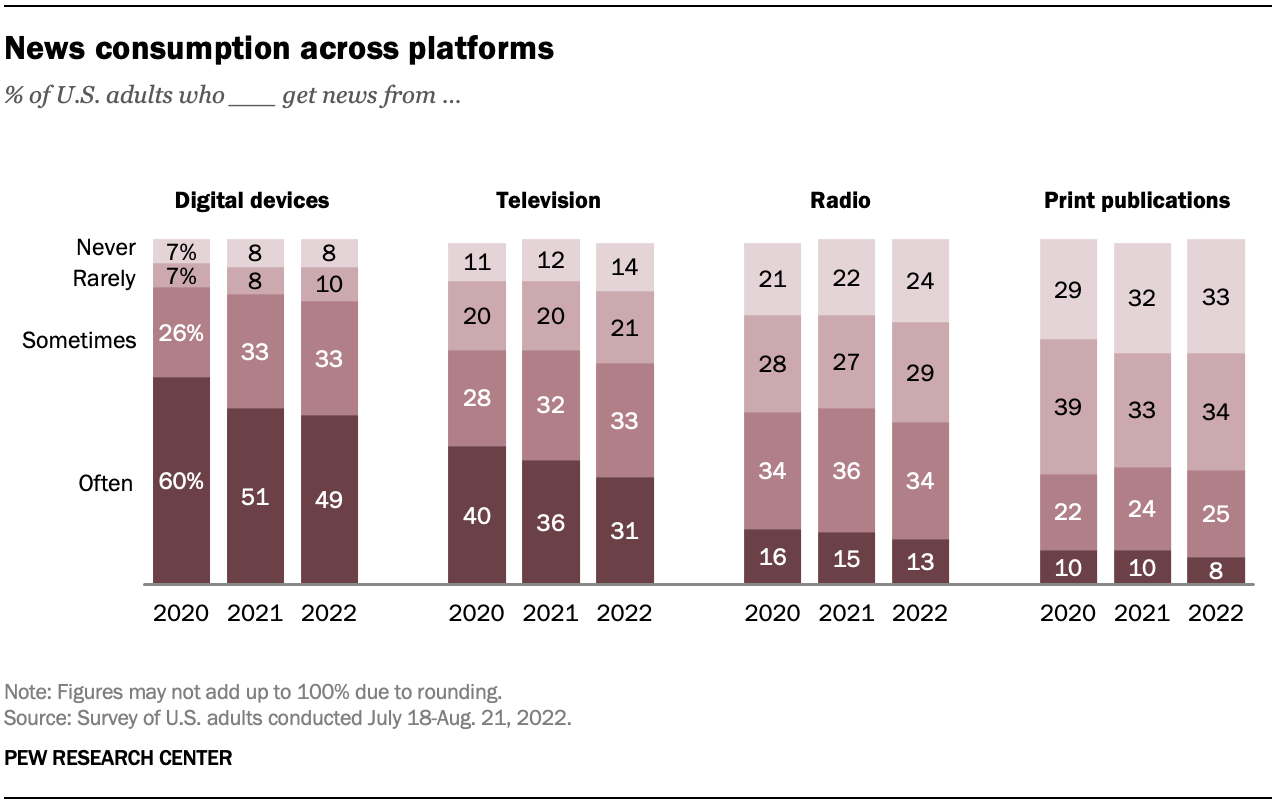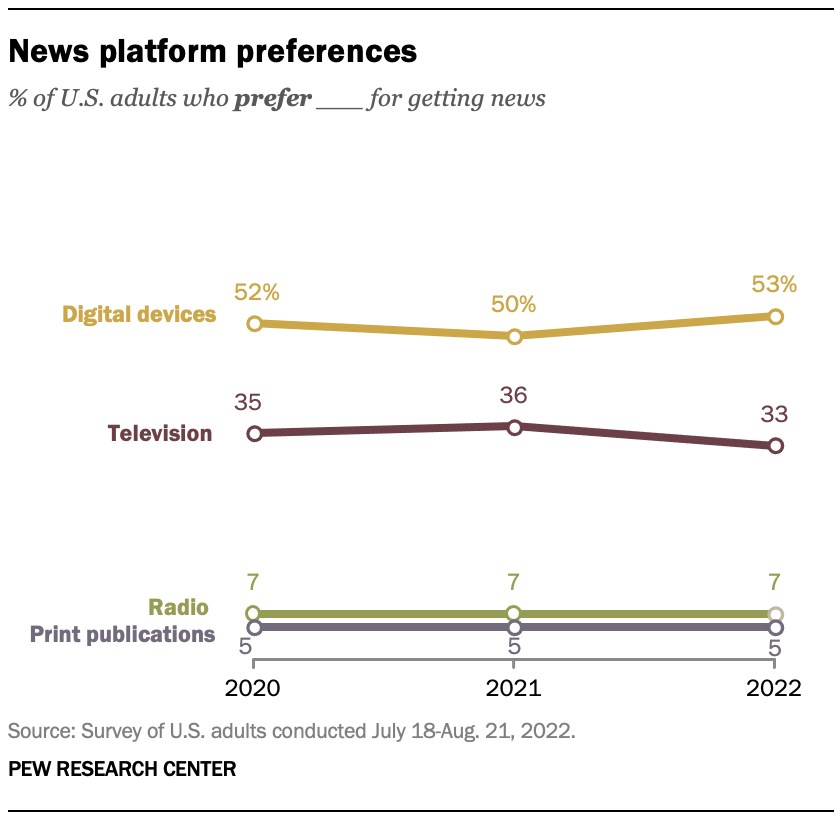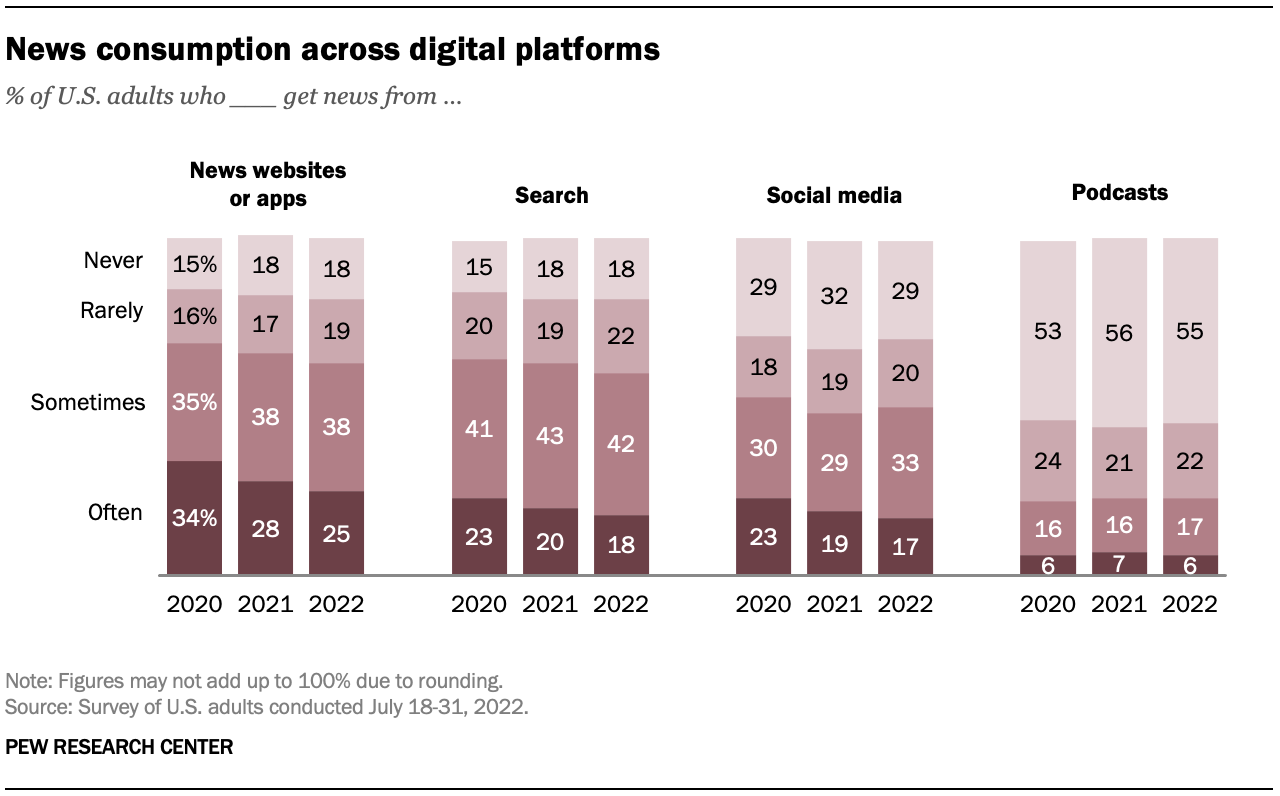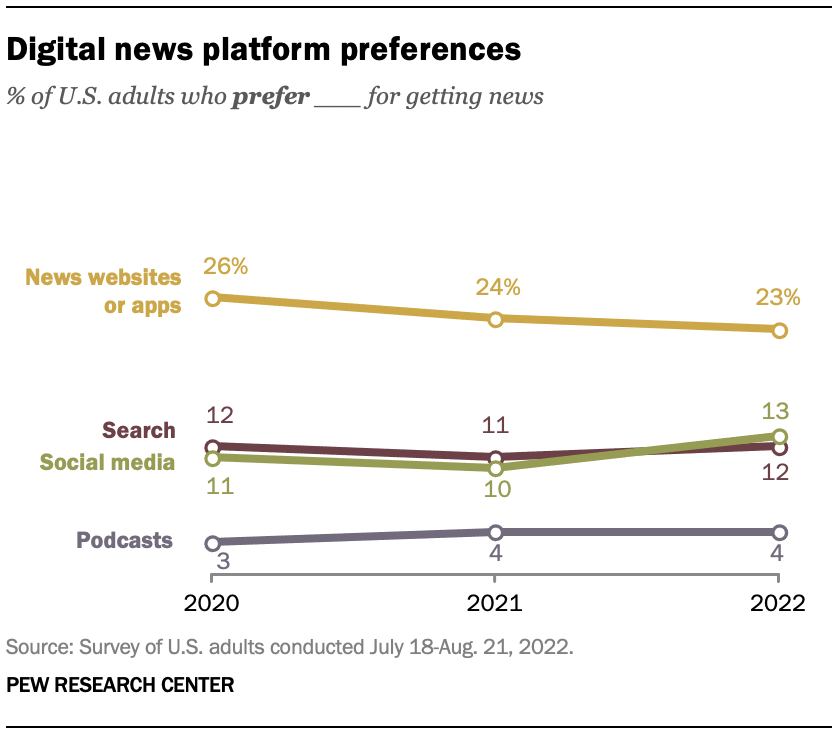Table of Contents
The transition of the news industry away from print, television and radio into digital spaces has caused huge disruptions in the traditional news industry, especially the print news industry. It is also reflected in the ways individual Americans say they are getting their news. Today, an overwhelming majority of Americans get news at least sometimes from digital devices. Explore the patterns and trends that shape the platforms Americans turn to for news below.

News consumption across platforms
A large majority of U.S. adults (82%) say they often or sometimes get news from a smartphone, computer or tablet, including 49% who say they do so often. This is similar to the 51% who said they often got news from digital devices in 2021, but lower than the 60% of those who said the same in 2020. The portion that gets news from digital devices continues to outpace those who get news from television. The portion of Americans who often get news from television has also decreased, from 40% in 2020 to 31% in 2022. Americans turn to radio and print publications for news far less frequently than to digital devices and television.

When asked which of these platforms they prefer to get news on, about half of Americans say they prefer a digital device (53%), more than say they prefer TV (33%). Even fewer Americans prefer radio (7%) or print (5%). These percentages have stayed mostly consistent since 2020.


News across digital platforms
Though digital devices are by far the most common way Americans access their news, where they get that news on their devices is divided among a number of different pathways. Today, news websites, apps and search engines are the digital pathways most Americans get news from at least sometimes. Half of Americans at least sometimes get news from social media, and about a quarter (23%) say the same of podcasts.

Among digital platforms, news websites or apps are also the most preferred source for news: About a quarter of U.S. adults (23%) prefer to get their news this way, compared with 13% who prefer social media, 12% who prefer search and 4% who say they prefer podcasts. The share of Americans who prefer to get news from each type of digital platform has not substantially changed from 2021 or 2020.


Who uses each news platform
News consumption across platforms varies by age, gender, race, ethnicity, educational attainment and political leaning. Americans under 50 are more likely to turn to digital devices and prefer them for getting news than are those 50 and older. Conversely, Americans 50 and older are more likely to turn to and prefer television.
CORRECTION: (Sept. 23, 2022): The charts in this fact sheet were updated to correct an error in the stated field dates for the data’s underlying survey. The updated text should read: “Source: Survey of U.S. adults conducted July 18 – Aug. 21, 2022.” These changes do not affect the fact sheet’s overall findings.

Find out more
This fact sheet was compiled by Research Assistant Naomi Forman-Katz and Associate Director Katerina Eva Matsa.
Read the methodology and the topline.
Pew Research Center is a subsidiary of The Pew Charitable Trusts, its primary funder. This is the latest report in Pew Research Center’s ongoing investigation of the state of news, information and journalism in the digital age, a research program funded by The Pew Charitable Trusts, with generous support from the John S. and James L. Knight Foundation.
Follow these links for more in-depth analysis of news consumption:
Social Media and News Fact Sheet, Sept. 20, 2022
Twitter is the go-to social media site for U.S. journalists, but not for the public, June 27, 2022
Nearly a quarter of Americans get news from podcasts, Feb. 15, 2022
Attention to COVID-19 news increased slightly amid omicron surge; partisans differ in views about the outbreak, Jan. 27, 2022
Trust in America: Do Americans trust the news media?, Jan. 5, 2022
News on Twitter: Consumed by Most Users and Trusted by Many, Nov. 15, 2021
About four-in-ten Americans say social media is an important way of following COVID-19 vaccine news, Aug. 24, 2021
Large Majorities of Newsmax and OAN News Consumers Also Go to Fox News, March 23, 2021
How Americans Navigated the News in 2020: A Tumultuous Year in Review, Feb. 22, 2021
More than eight-in-ten Americans get news from digital devices, Jan. 12, 2021
Measuring News Consumption in a Digital Era, Dec. 8, 2020
Many Americans Get News on YouTube, Where News Organizations and Independent Producers Thrive Side by Side, Sept. 28, 2020
Americans Who Mainly Get Their News on Social Media Are Less Engaged, Less Knowledgeable, July 30, 2020
Younger adults differ from older ones in perceptions of news about COVID-19, George Floyd protests, July 9, 2020
Read all reports and short reads related to news platforms and sources.


